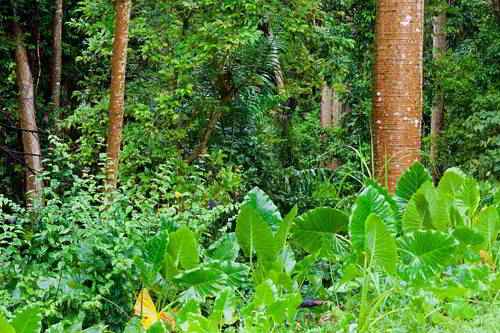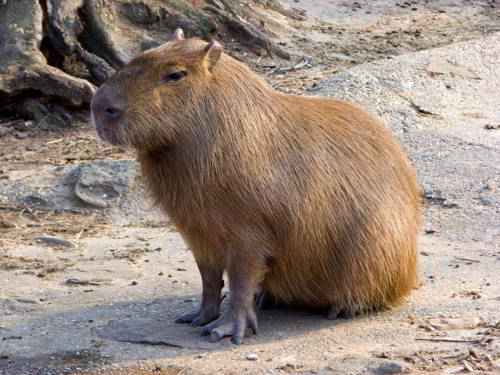Tropical forests are forests that grow in tropical and subtropical regions. Tropical forests cover about six percent of the Earth's land surface. There are two main types of rainforest: tropical rainforests (such as those found in the Amazon or the Congo Basin) and dry rainforests (such as those found in southern Mexico, the plains of Bolivia, and the western regions of Madagascar).
Rainforests typically have four distinct layers that define the structure of the forest. The tiers include forest floor, undergrowth, top canopy (forest canopy) and top tier. Forest floor, the darkest place in the rainforest, where little sunlight penetrates. The undergrowth is the layer of forest between the ground and up to a height of about 20 meters. It includes shrubs, grasses, small trees and trunks of large trees. Forest canopy - is a canopy of tree crowns at a height of 20 to 40 meters. This tier is made up of tall tree tops that are home to a variety of rainforest animals. Most of the food resources in the rainforest are in the upper canopy. The upper tier of the rainforest includes the crowns of the tallest trees. This tier is located at an altitude of about 40-70 meters.
The main characteristics of the rainforest
The following are the main characteristics of tropical forests:
- tropical forests are located in the tropical and subtropical regions of the planet;
- rich in species diversity of flora and fauna;
- there is a large amount of precipitation;
- rainforests are under threat of extinction due to clearing for timber, farming and grazing;
- The rainforest structure consists of four layers (forest floor, undergrowth, canopy, topstory).
Tropical forest classification

- Tropical rainforests, or tropical rainforests, are forest habitats that receive abundant rainfall throughout the year (usually over 200 cm per year). Moist forests are located close to the equator and receive enough sunlight to keep the average annual air temperature high enough (between 20° and 35° C). Tropical rainforests are among the most species-rich habitats on earth. They grow in three main areas around the world: Central and South America, West and Central Africa, and Southeast Asia. Of all tropical rainforest regions, South America is the largest in the world: it covers about 6 million square kilometers.
- Tropical dry forests are forests that receive less rainfall than tropical rainforests. Dry forests usually have a dry season and a rainy season. While rainfall is sufficient to support vegetation growth, the trees must be able to withstand long periods of drought. Many tree species that grow in tropical dry forests are deciduous and shed their leaves during the dry season. This allows the trees to reduce their water needs during the dry season.
rainforest animals

Examples of several animals that inhabit rainforests:
- (Panthera onca) is a large feline that lives in the tropical forests of Central and South America. The jaguar is the only panther species found in the new world.
- Capybara, or capybara (Hydrochoerus hydrochaeris) is a semi-aquatic mammal that inhabits the forests and savannas of South America. Capybaras are the largest rodents living today.
- Howler monkeys (Aloautta) - a genus of monkeys, which includes fifteen species inhabiting tropical forests throughout Central and South America.
You can find out more information about the animals of the Amazon rainforest in the article "".
If you find an error, please highlight a piece of text and click Ctrl+Enter.
